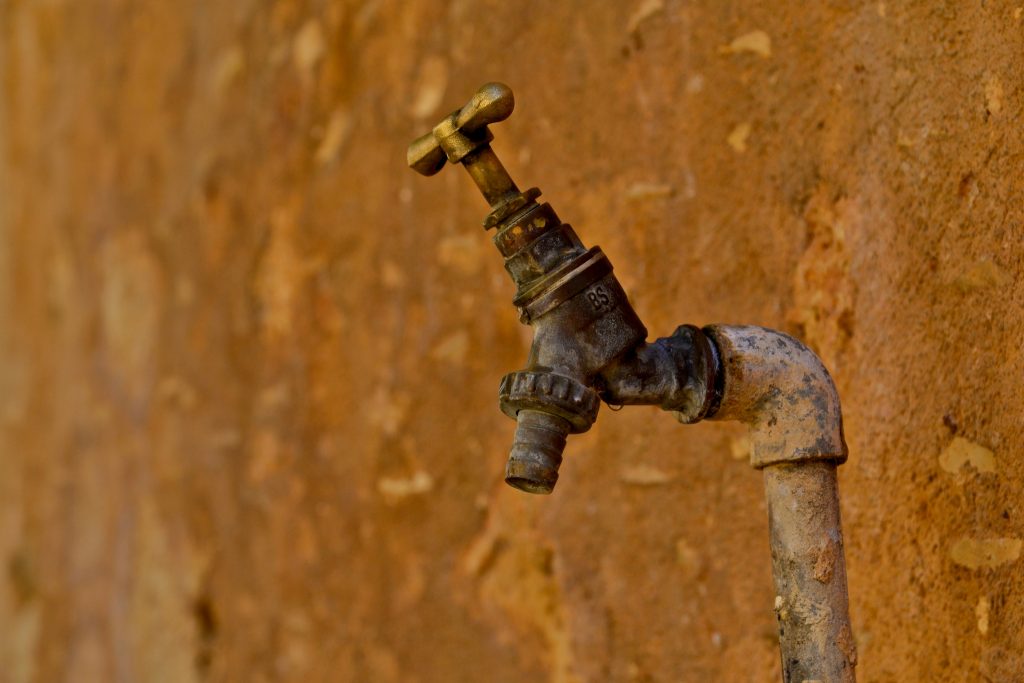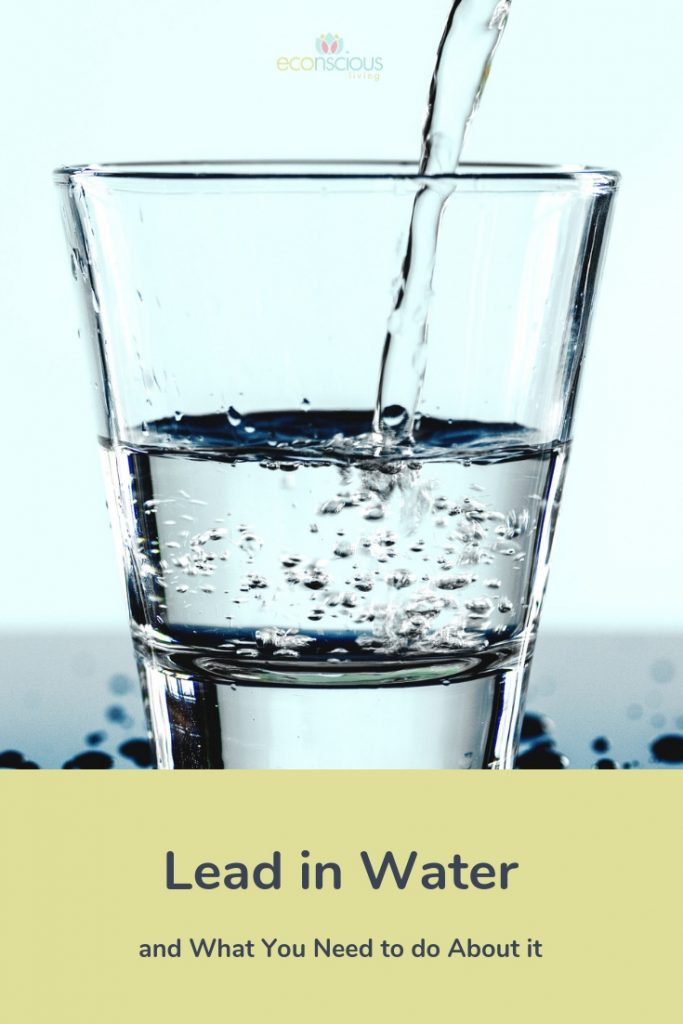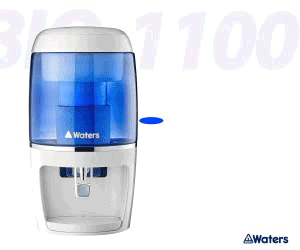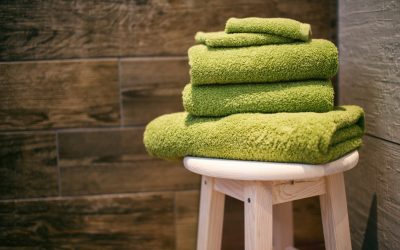Lead in Water and What You Need to do About It
Did you see the recent Australian government warning? There is likely to be toxic lead in our drinking water. They’ve advised us all to flush our taps every morning for 30 seconds before even filling the kettle, and for 2-3 minutes following a holiday? What’s brought about this sudden warning? Well, nothing. Lead in water is not new. We’ve likely been drinking lead-contaminated water for quite some time we just haven’t been officially told about it.
Lead has unfortunately been all too prominent in Western Australia headlines of late. Only last year the brass fittings used in the plumbing of the newly built children’s hospital was found to contain high levels of lead, resulting in contaminated water. Schools too have been found to have high levels.
Read on to learn more about why lead is just one of many toxic contaminants that you don’t want in your drinking water. I’ve been talking about the need for a good water filter for quite a while and this is a perfect example of why.
How are we being exposed to lead?
Lead is a toxic heavy metal. It is found naturally in the ground but we are exposed mostly through man-made sources.
For a long time, leaded-petrol was our main concern but now the most common ‘controllable’ source of lead is likely our drinking water.
We may get a tiny amount of lead from natural sources in the ground but that’s not what the Government is talking about here. They are talking about the lead that is used in standard plumbing fittings in our homes, schools, hospitals, sports centres, offices, public water fountains etc. Even if your water pipes are made from plastic, your brass faucet fixtures, which are used in almost all plumbing, may account for over half of the lead in the first-draw water.
Years ago (pre-1930’s) it was common practice to use full-on lead piping in our domestic plumbing. If you live in an old home you need to understand that you may be exposed to a lot of lead.
Even today, our domestic plumbing usually contains lead as it’s a common component of copper and PVC pipes, brass fittings, lead solder, and roof flashing.
The problem in Australia is that we allow a relatively high concentration of lead in our plumbing. In fact, it’s 18 times higher than what is allowed in the USA, where a few years ago they reduced the allowable limit of lead in plumbing products to zero (or a maximum of 0.25% to be exact). Here we allow 4.5%. It might not seem like much but here’s what a recent Australian study found:
- Analysis of 212 first draw drinking water samples shows that almost 56% contain detectable concentrations of lead.
- Of these detectable concentrations, lead exceeds Australian Drinking Water Guidelines [10µg/l] in 8% of samples.
- Analysis of household plumbing fittings (taps and connecting pipework) showed that these are a significant source of drinking water lead contamination.
- Water lead concentrations derived for plumbing components range from 108 mg/L to 1440 mg/L.
- Analysis of kitchen tap fittings demonstrated that these are a primary source of drinking water lead contamination.
- The results of this study demonstrate that along with other potential sources of contamination in households, plumbing products that contain detectable lead up to 2.84% are contributing to the contamination of household drinking water.
This corroborates earlier studies on drinking water quality in Australia, which have shown that lead used in the roof catchments of tank supplies and corrosion of plumbing fittings are key contributors to the contamination of domestic drinking water.
Lead can leach from your fittings at varying rates and hence why it is normal to find lead results varying a lot from home to home. It depends on many factors such as how long your water has been stagnant for in the pipes, whether you drink from a hot tap, how much chlorine is in your water and how acidic or soft your water is. Most of these factors are outside of our control but read on to find out what you can do.
Why should we care about lead exposure?

The Australian Drinking Water Guidelines allow 10µg/l of lead in our drinking water but clearly, on a daily basis, we are exceeding this far too frequently and to the detriment of our health.
The World Health Organisation tells us even low levels of lead are harmful. It is a highly poisonous, cumulative metal which can affect almost every organ in the body including the nervous system, kidneys, cardiovascular, neurological and gastrointestinal systems.
Children and pregnant women are especially vulnerable. Children absorb 4-5 times more lead in their bodies than (non-pregnant) adults. They can suffer serious and sometimes irreversible neurological damage. Lead can result in serious health, learning and behavioural repercussions significantly impacting a child’s IQ. Their immature detoxification systems cannot deal with toxicants the way adults can.
The most critical effect of lead in young children is that on the developing nervous system. According to the WHO, subtle effects on IQ are expected from blood lead levels at least as low as 50 µg/l and the effects gradually increase with increasing levels of lead in blood. Lead exposure has also been linked to ADHD and aggression.
As stated in the government warning, infants who drink formula prepared with lead-contaminated water may be at a higher risk because of the large volume of water they consume relative to their body size.
In pregnant women, high lead levels are associated with premature births, low birth weights and miscarriage. Blood disorders, anaemia, high blood pressure and osteoporosis are also linked to high lead levels.
In men, the reproductive effects of lead include decreased sperm count and increased number of abnormal sperm.
This is why inorganic lead is categorised by the International Association for Cancer Research (WHO) as ‘probably carcinogenic to humans’. There’s plenty of evidence to show it causes cancer in animals but not quite enough evidence yet demonstrating it’s a carcinogen in humans.
Do you really want to wait to find out?
What can we do about lead in water?
Since this health warning was divulged through an investigative journalist last week (despite the warning being published six months ago in a little-known government website) the government has announced it is going to reduce the allowable concentration of lead in plumbing products by at least 94% through the Australian Building Codes Board.
Now that’s great news, but of course, it will only affect any brand new homes and buildings once the regulations are implemented. In the meantime, we are left drinking water from plumbing systems that are most likely leaching lead, and we and our children are accumulating the nasty toxicant in our systems.
The government warning provides advice as follows:
- using water from cold taps only for drinking and cooking
- flushing cold water taps used for drinking and cooking for about 30 seconds first thing in the morning to draw fresh water through the tap
- flushing cold water taps used for drinking and cooking for about 2 to 3 minutes after long periods of non-use, such as return from holidays; this ‘flushed’ water can be collected and used for washing up
- choosing plumbing products that have been certified to WaterMark and AS/NZS 4020:2005; and/or have low lead content or are lead-free, when renovating or building
Whilst all these management measures will certainly help to reduce your exposure they don’t solve the problem nor are they environmentally responsible or economical. That’s a lot of scarce water going down the drain and a lot of taps to replace.
Going forward you should purchase taps that are made from stainless steel as they don’t contain lead.
For your health’s sake though, my advice is to either get your water tested and/or to install a water filter.
I’d highly recommend water quality testing if your child has learning difficulties, behavioural issues or there is a chronic illness in the home.
If medical tests show elevated of metals in your body, it’s also a good idea to try and identify the source.
If you do have your water tested, you need to ensure you are testing both standing water and flushed. For a standard suite of water quality parameters, testing will cost upwards of $300 from a certified laboratory. You can also just test for lead, which is much cheaper and the testing kits are available from here.
Having said all that, in my view and that of many water quality experts you should get a water filter regardless.
Drinking water contains way more than just lead. Pesticides, copper, microplastics, fertilisers, drugs, chlorine, fluoride, aluminium, arsenic, mercury, nickel, manganese and tin find their way into your water either intentionally or unintentionally, when all you should be drinking is pure water.
My favourite countertop water filter
If you want a simple counter-top solution that doesn’t require much space or any plumbing, you can get up and running very quickly with the Waters Co Australia filter systems. Because its portable, it’s also an ideal choice if you are renting or you won’t be residing at your home long-term.
Let’s have a look at why it is the only counter-top water filter I recommend and use.
The Waters Co Australia filters remove sediment, rust, bacteria, cysts, chlorine, heavy metals (such as lead and copper), fluoride and unpleasant odours. They are unusual in that they have an extremely high removal rate for fluoride and heavy metals (close to or at 99%) including lead and copper which is unheard of in filters of this type. To achieve a higher rate of removal the only alternative would be to install a reverse osmosis system, which many people dislike because they waste a lot of water, require a lot of space and render your water slightly acidic.
Finding this post helpful? Pin it for later!

What about school?
Our children spend a lot of time in school. They run around a lot and they usually drink copious amounts of water from the school fountains. The plumbing systems in these schools will be no different from those in your home. In fact, they will often be worse as water is left stagnant in these systems for long periods of time over mid-term breaks and long school holidays.
As a result, I always give my children the largest bottle full of filtered water in their school bags so they don’t have to refill too often (you could even give them two). I tell them never to drink from the school fountains immediately after a holiday, mid-term break or weekend.
However, what you really want to do is ask your school (or workplace) what they are doing to address the lead warning given by the Australian government. Have they tested their water or assessed their plumbing? Do they have a plan in place to deal with contaminated water after the long summer holidays? Water left sitting in lead plumbing systems will do way more to adversely affect a child’s IQ than missing a night’s homework or two.
There are other sources of lead in the home including food, paint and dust. These are discussed further in this blog.
For a helping hand to check the lead levels in your home, take a look at my services here.
References
http://www.health.gov.au/internet/main/publishing.nsf/content/A12B57E41EC9F326CA257BF0001F9E7D/$File/Lead-plumbing-products-Guidance-Statement-July2018.pdf
http://www.who.int/water_sanitation_health/dwq/chemicals/lead.pdf
http://www.saiglobal.com/PDFTemp/Previews/OSH/as/as4000/4000/4020-2005.pdf
http://www.who.int/ipcs/features/lead..pdf?ua=1
http://www.ncbi.nlm.nih.gov/pubmed/2751289
http://www.lead.org.au/clp/products/Do_It_Yourself_Lead_Safe_Test_Kits_Ad.html
http://www.dailytelegraph.com.au/news/national/nsw-residents-warned-to-run-taps-to-avoid-lead-poisoning/video/688bdb2c1473e4d724800f1a054a84b2
http://monographs.iarc.fr/wp-content/uploads/2018/06/mono87.pdf
http://www.who.int/water_sanitation_health/water-quality/guidelines/chemicals/lead.pdf
This blog post contains affiliate links, which means that if you buy one of the products I recommend through a link here, I earn a tiny commission. I only recommend products that I, myself, use. I will never recommend to you something that I haven’t tried and tested! Please feel free to send me a message if you want to know more about any of the products I share on the blog.
Related Posts
The Best Natural Pillows For Better Sleep
If you truly want to make a simple upgrade in the bedroom that will change your health then keep reading to find the best natural pillows for better sleep
Why You Should Have a Home Sauna for Better Health
Quite simply if there was a pill that did ALL the things that research is showing us saunas do, you would be taking it. Here’s why and my recommendations
Myth Busting: How Effective Are Air-Purifying Plants?
It’s a common belief that air-purifying plants are an effective way of removing VOCs and toxicants from the air in your home. I’m afraid not, here’s why…






